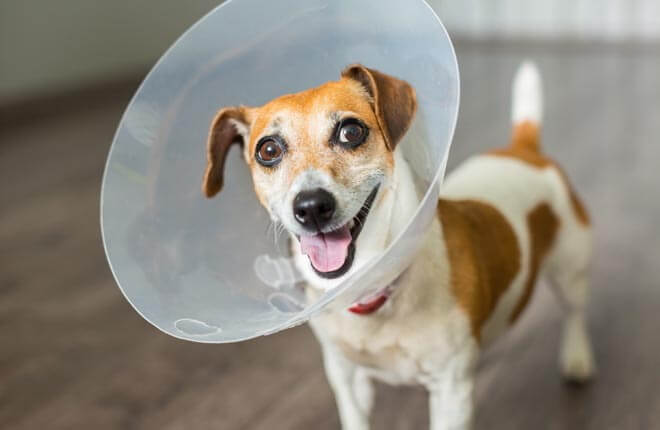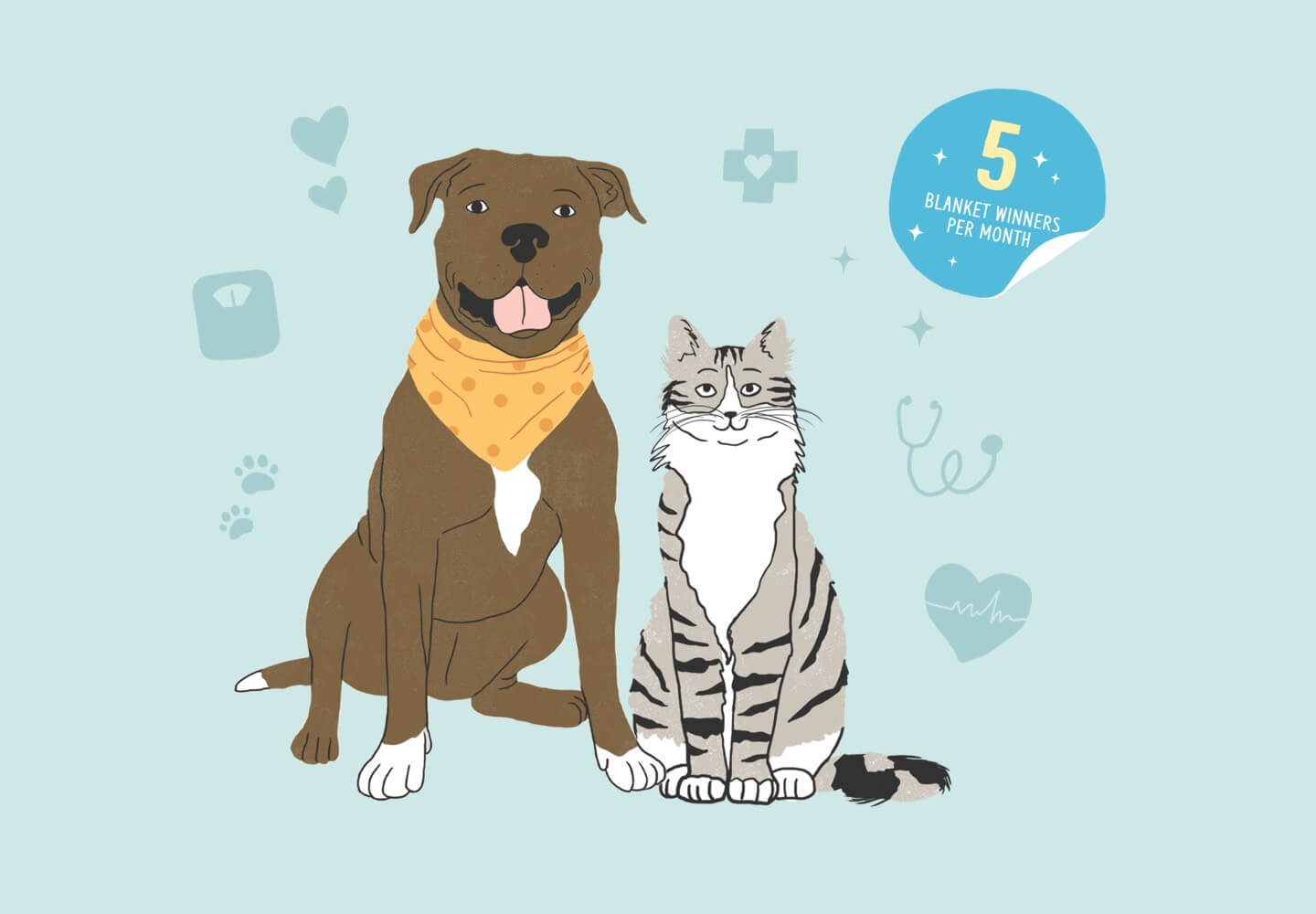Seeing your dog struggling in a protective cone (also known as an Elizabethan collar or E-collar) can feel just as bad for you as you might think it is for your pup. It can be hard watching your dog trying to navigate around the home, eat and drink, wiggle around in their bed, and try to get comfortable while wearing a cone. Some dogs take it in stride, while others can find the cone much more challenging. There are some things you can do to help your dog feel more comfortable and manage their anxiety and lifestyle while they’re in the cone.
Why Does Your Dog Have to Wear the Cone of Shame?
If your dog is having surgery, waiting for an injury to heal, or dealing with a skin issue, they may have to wear a protective cone, most commonly a plastic version. Sometimes the cone might be needed for a few days, but often it can be for one or up to a few weeks. Why? Essentially, your veterinarian needs your dog to avoid doing what they instinctually want to do — pull stitches out with their teeth, scratch an itch, or lick a wound. Not only can these behaviors slow healing and introduce bacteria to the wound, but they can do immediate and sometimes severe damage. Imagine a fresh incision opening up while your dog is home alone because they pull out a few stitches — that could mean dangerous exposure of the repaired tissues and, at the very least, cause unnecessary pain. So, as much as we hate it, it’s vitally important that we keep doggie teeth, tongues, and toes away from the healing area.
Helping Your Dog Settle into Life in The Cone
In the best-case scenario, it’s great to start getting your dog comfortable wearing a cone before they have to do it long-term. That’s not always possible, but it doesn’t mean they have to struggle when the time comes to put on the cone. Here are some things you can do to make life a little easier and give them the physical and emotional comfort they need.
Clear routes
Keep main pathways clear so there are fewer obstacles to run into. Your dog isn’t going to fully understand the dimensions of their new headpiece, and they might be frustrated by constantly bumping into things.
Comfy beds
Make sure they have a few places to rest that are easily accessible. A big dog bed at ground level and away from obstacles is great. Having a rolled blanket or pillow to prop their coned head on can be much more comfortable.
Lots of rewards
Provide lots of positive reinforcement when they’re calm and relaxed in the cone. Treats and affection help to show them they’re doing the right thing and eases their tension.
Show them some love
Don’t underestimate the power of your touch. Physical contact from their person can soothe body and mind.
Keep yourself calm
It’s important to remember our pets can sense our emotions. If you’re stressed and uneasy over the cone, they’ll feed off those feelings.
Occupy their minds
Try using food puzzles and focused activities to take their mind off the cone. But make sure you aren’t enabling more activity than they should be doing based on their injury; always ask your veterinarian about which activities are appropriate. There are commercial and DIY food puzzles, mind games, and nose work ideas your dog can enjoy without much physical activity. Pick food puzzles and stuffable toys that are large enough for them to work on while wearing a cone.
Alternatives to The Plastic Cone
There are a few products that can do a similar job and be more comfortable for your dog. But it’s important to talk to your veterinarian first. There is a reason that plastic cones are the most common type — they are strong enough and provide enough coverage to prevent trauma to most parts of the body. Not all of these cone alternatives work for every recovery situation or every injury or wound location.
Protective garment
These are fitted suits made from a lightweight, breathable material, designed to cover the wound so your dog can’t lick it. The material often has an elastic quality so that it hugs your dog’s body close and is less likely to move around or be easily pulled up and off the skin by your dog. They generally cover large areas of the body and can even include sleeves. Keeping these suits clean can be challenging so you may need more than one suit on hand. They may not work well if your dog really wants to chew the area or if they can reach the area with their back legs to scratch.
Soft cones
There are a variety of soft cones available that are often more comfortable than the traditional hard plastic. Some are padded fabric. Others are inflatable, more like a donut around the neck. Getting the size right is important for this style. In general, soft cones and in particular the donut-style cones are much easier for your dog to get themselves out of or to get around. Always check with your veterinarian before purchasing one of these cones, as they can be expensive and might not offer enough protection.
Protective socks
If your dog has a foot or leg injury that needs to be covered, sometimes a simple sock or specialized sock-like product like a bootie might be appropriate. Some products have drawstrings or a Velcro strap built in. It is very important that you ask your veterinarian for instructions, as tightening a strap or band too tight or using something like a rubber band could damage the blood supply to your dog’s leg.
Let’s face it, protective cones are not much fun for you or your dog. But the hard truth is that they’re necessary to allow for healing of surgical wounds, damaged skin, or other injuries. As a responsible owner, you need to fight the urge to remove it as no matter how bad you think your dog may feel in the short term, it’s still better than aggravating, infecting, or opening up their injury and causing long-term damage, stress, and pain. Do what you can to make your dog’s days in the cone as calm and pleasant as possible and they will be on their way to a full recovery in no time.
ZPC-01350R1



